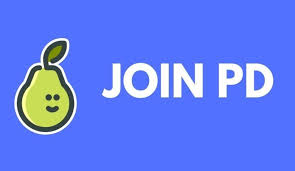Postcard Printing: A Journey through Time and Techniques
Introduction: The Age-Old Charm of Postcards
Sending and receiving postcards has been an enduring practice for over a century. These little pieces of card stock, free from the constraints of an envelope, carry with them tales of travels, memories, and simple greetings. But how are these postcards brought to life? Let’s dive deep into the world of postcard printing and its evolution.
1. Historical Beginnings: The Birth of the Postcard
Postcards were only sometimes as freely available or as diverse in design as they are today. It began with the straw-colored Austrian Korrespondenz Karte in 1869, setting the stage for a popular communication medium.
The evolution was slow but steady. By the 1870s, Germany and Austria introduced postcards with engraved views. Britain soon followed suit, but not until 1894. What hindered their mass production was a rule that prevented writing messages on the address side of the card. Thankfully, this changed over time, allowing postcards to flourish and become the beloved keepsakes they are today.
2. Artistry and Innovations
The artistic flair in postcard designs must be addressed. Famous artists like Alphonse Mucha, Phil May, and Louis Wain were some of the pioneers who elevated postcard designs to an art form.
New techniques like photomontage combined the magic of photography with drawings, giving postcards a unique and captivating appearance. These blended methods introduced a fresh approach to how postcards could visually tell stories.
3. The Printing Process: Making the Magic Happen
But what about the tangible aspect? The texture, the shine, and the feel of a postcard? That’s where the printing process comes into play.
Modern postcards come to life with a gloss or smooth finish, achieved by printing a clear varnish or ink atop the colored print. It not only enhances the visual appeal but also adds a tactile element. Moreover, eco-friendly printing methods ensure that the love for postcards doesn’t harm our environment.
Multiple postcards are often printed on a single sheet of card stock to optimize printing. This method ensures efficient production while maintaining the quality of each card.
4. Why Postcards Remain Relevant
In our fast-paced digital age, one might wonder about the relevance of postcards. Yet, there’s an undeniable charm in holding a tangible piece of memory or greeting. They bridge distances, evoke nostalgia, and represent a personal touch that electronic messages can’t replicate.
Conclusion: Celebrating the Timeless Appeal of Postcard Printing
Postcard printing has come a long way from its humble beginnings. With advancements in printing techniques and an ever-evolving artistic approach, postcards are cherished communication tokens. Their resilience in our digital era is a testament to their timeless appeal and the human desire to connect meaningfully. So, the next time you send or receive a postcard, take a moment to appreciate the art, history, and emotion that it embodies.
Also, Read The GT2GE21 Enigma: From High-Speed Pursuits to Unique Codes.
FAQs
What is a postcard?
A postcard is designed for transmitting messages that can be mailed without an envelope. Historically, they’ve been used for quick and easy communication.
When were postcards first introduced?
The first government-issued postcard was the straw-colored Austrian Korrespondenz Karte, released in October 1869.
Why were postcards so popular historically?
They offered individuals a swift and straightforward way to communicate. Postcards became more versatile and artistically appealing as restrictions relaxed on the design and content.
Who were some famous postcard designers?
In the early 20th century, renowned artists like Alphonse Mucha, Phil May, and Louis Wain contributed their talents to postcard designs.
How did the artistry of postcards evolve?
Innovative techniques became popular, such as photomontage (blending photography with drawings). It added a unique visual appeal to postcards, blending realism with artistry.
What’s unique about the printing process of postcards?
Modern postcards often have a glossy or smooth finish, achieved by printing a clear varnish or ink on top of the color print. This method enhances both the visual and tactile appeal of the card.
Are postcards environmentally friendly?
Yes, with advancements in eco-friendly printing methods, postcards can be produced with minimal environmental impact.
How many postcards are typically printed on one sheet?
Two or more postcards are usually printed on a single sheet of card stock to ensure efficient production.
Are postcards still relevant in the digital age?
Absolutely! Despite our digital communication methods, postcards offer a tangible and personal touch, making them a cherished form of communication that bridges distances and evokes nostalgia.
Where can I find postcards with artistic designs?
Many specialized stores, online platforms, and artists offer various postcard designs, from vintage reproductions to modern artistic interpretations.


